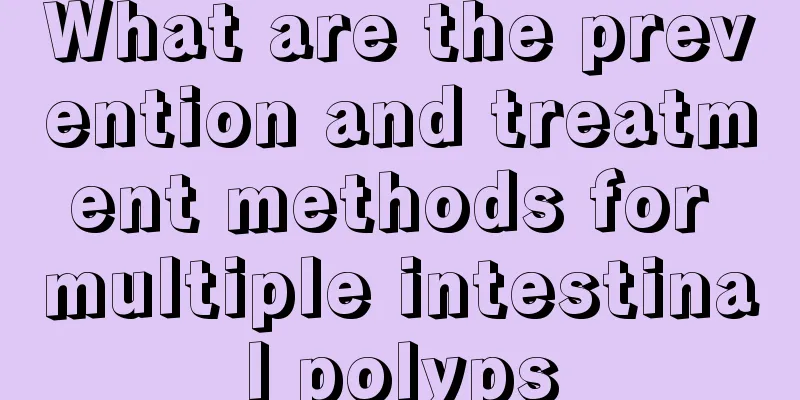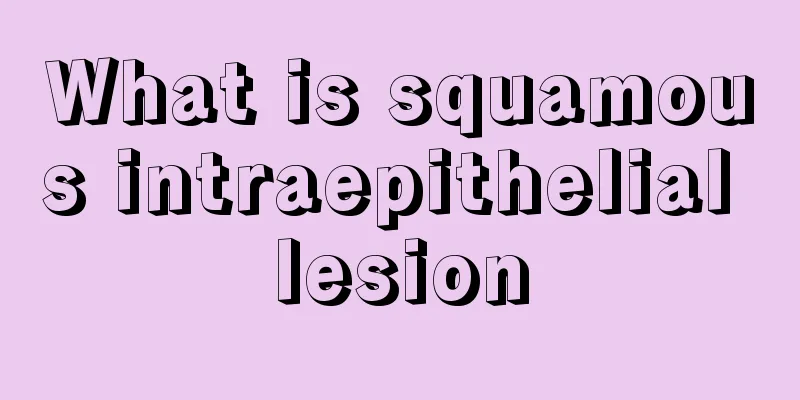What are the prevention and treatment methods for multiple intestinal polyps

|
Intestinal health is the most important thing in the body, because the intestines are where people digest food and can perfectly absorb and utilize various nutrients in food. However, once intestinal disease occurs, the ability to absorb nutrients will be greatly reduced. Among them, multiple intestinal polyps are a relatively common symptom of the disease, which has a serious destructive effect on intestinal function and can lead to malabsorption and incomplete digestion sequelae. Therefore, when gastrointestinal problems occur, they must be treated in a timely manner. Let’s take a look at how to prevent and treat multiple intestinal polyps. prevention: In recent years, studies have reported that long-term oral use of non-steroidal anti-inflammatory drugs such as sulindac can prevent the recurrence of polyps, but attention should be paid to other side effects of the drugs. At the same time, the effectiveness of this preventive treatment remains to be observed in large numbers of cases. treat: The principle of non-surgical treatment of colorectal polyps is to remove the polyps as soon as they are discovered. The choice of treatment depends on their location, the presence or absence of a pedicle, the size and the potential for malignancy. Non-surgical treatment mainly includes endoscopic high-frequency electrocoagulation polypectomy, or laser or microwave resection. Before surgery, the intestine is cleaned and prepared, and resection is performed when the coagulation mechanism is unobstructed. After surgery, the patient is allowed to eat a small amount of fluid or fast for 1 to 3 days, and the amount of activity is restricted. Intravenous hemostatic (such as ethylphenolsulfonamide 3.0 g/d), anti-inflammatory (antibiotics for Gram-positive bacteria), and intestinal mucosal protection (dioctahedral montmorillonite, etc.) treatments are given. The stool color, bowel sounds, etc. are closely observed, and close attention is paid to the occurrence of bleeding and perforation. (1) High-frequency electrocoagulation resection: The following methods can be used according to the shape, size, number, presence, length and thickness of the polyps. ① High-frequency electrocoagulation: mainly used for multiple small hemispherical polyps. ② High-frequency electrocoagulation snare resection: mainly used for pedunculated polyps. ③ "Close contact" removal method: It is mainly used for large polyps with long pedicles. For those that are difficult to suspend in the intestinal cavity, the large polyp close contact intestinal wall electrocoagulation resection method is adopted. ④ High-frequency electrocoagulation thermal biopsy forceps method: rarely used at present. (2) Biopsy forceps method: It is mainly used for single or a few small spherical polyps. It is simple and easy to perform, and biopsy tissue can be obtained for pathological examination. (3) Staged and batch removal: Mainly used for patients with 10 to 20 polyps that cannot be removed at one time. (4) Laser vaporization and microwave diathermy: suitable for those who do not need to keep histological specimens. |
<<: How long does it take after taking cefuroxime before I can drink alcohol?
>>: What to do with mucous gland cyst?
Recommend
What is the matter with unformed stool
The main symptom of unformed stool is the common ...
What is the name of checking the uterus and ovaries?
There are many infertile patients in our lives. W...
Can MRI detect cervical cancer?
For cervical diseases, especially cervical cancer...
The texture of both lungs is coarse and fuzzy
The lungs are very important organs in the human ...
Itchy on both sides of the anus_Itchy on both sides of the anus
The itching on both sides of the anus is caused b...
Is iodine tincture effective in treating common warts?
Iodine tincture has a very good bactericidal and ...
Is it necessary to get cervical cancer vaccination at the age of 30?
It is still necessary to get the cervical cancer ...
What are the pathological characteristics of nasopharyngeal carcinoma and laryngeal cancer and what are the dietary treatment methods?
Nasopharyngeal cancer and laryngeal cancer are tw...
Demyelination of white matter
Any disease has its cause, so when treating the d...
How to treat premature heartbeat and slow heartbeat
The heart is the most critical organ in the human...
What are the effects of black oolong tea?
Oolong tea is a type of tea that is familiar to e...
How many days does it take to ferment rice wine and add water
I believe that many people often drink rice wine ...
What is the best way to treat lung cancer? Introduction to the best treatment for lung cancer
The best treatment for lung cancer is chemotherap...
Does it matter if I put the TV and the refrigerator together?
We all know that for some families living in buil...
What causes dry and flaky skin?
The main reason for dry and flaky skin is the dry...









